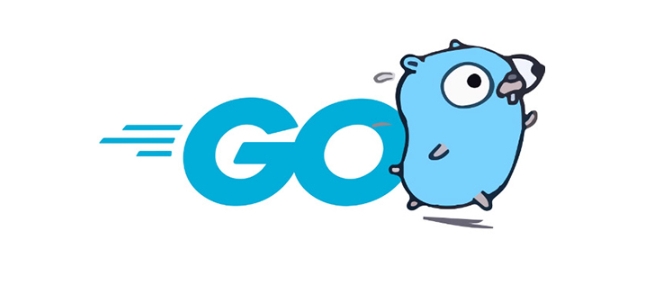In Go, whether to use pointers depends on whether the original variable, structure size and code readability need to be modified. 1. If the function needs to modify the original structure or structure is larger (such as more than a few hundred bytes), the pointer should be passed to avoid copy overhead; otherwise, the value transmission is safer and more intuitive. 2. If the method needs to modify the receiver status or the structure is large, the pointer receiver should be used; otherwise, the value receiver is available because it supports the call of pointers and values. 3. It is recommended to use pointers to improve performance when large structures are frequently transmitted, while small structures are more efficient and clear in value transmission. 4. It is safer to pass value without side effects, and pointers are suitable for shared data modification. The selection basis includes: whether to modify the original data, structure size, and code clarity.

In Go language, using pointers or values directly affects the performance, readability and behavior of the program. Simply put: if you want the function to modify the variable itself, or the structure is larger, you should use pointers; otherwise, it is safer and more intuitive to use values.

The following is a few common scenarios to talk about the differences and selection basis of the two.
Function parameter passing: value passing vs pointer passing
All parameter passing in Go are "value passing". That is, the function receives a copy of the original data.

- Passing value : Modification of the structure inside the function will not affect the outside.
- Passing pointer : The function can modify the content of the original variable.
For example:
type User struct {
Name string
}
func changeName(u User) {
u.Name = "Tom"
}
func changeNamePtr(u *User) {
u.Name = "Jerry"
} Calling changeName(user) will not change the outside user.Name , but using changeNamePtr(&user) will take effect.

so:
- If you just need to read the structure content, there is no problem passing the value.
- If you need to modify the original structure, or the structure is large (such as more than a few hundred bytes), it is recommended to pass pointers to avoid copy overhead.
Method Set: Pointer Receiver vs Value Receiver
When defining a method in Go, you can choose whether the receiver is a value or a pointer:
func (u User) SayHi() {}
func (u *User) ChangeName(newName string) {}Here is a key point:
- The method of the value recipient can be called by the value and pointer (Go automatically handles it).
- The method of the pointer receiver can only be called by the pointer, not by the value.
Another point: If you want to modify the field of the receiver itself through methods, you must use a pointer to the receiver. Otherwise, the copy will be changed.
so:
- If the method does not need to modify the receiver status, you can use the value of the receiver.
- If the method wants to modify the receiver content, or the structure is large, it is recommended to use a pointer to the receiver.
Performance considerations: Structural size determines whether to use pointers
When you frequently pass a larger structure (such as containing multiple fields or nested structures), using value passes will cause a large amount of memory replication and affect performance.
for example:
type BigStruct struct {
Data [1024]byte
}When this structure is used as a parameter or return value, if passed with a value, 1KB of data will be copied each time. If it is called frequently, resources will be wasted.
suggestion:
- When the structure is larger than a few dozen bytes, try to use a pointer.
- For small structures (such as only one or two fields), value passing is faster and clearer.
Readability and security: Values are "cleaner" than pointers
One advantage of using values is that you don't have to worry about side effects. Because it is a copy, no matter how much it is tossed with a function or method, it will not affect the outside.
Pointer operation may bring unexpected modifications and increase understanding costs.
so:
- If you don't want functions/methods to have an impact on the outside, it's safer to use values.
- If you explicitly want to share data, it is more appropriate to use pointers.
Basically that's it. Selecting a pointer or a value depends on whether you want to modify the original data, structure size, and code clarity. It is not complicated but it is easy to ignore details. Just pay more attention when writing.
The above is the detailed content of Golang pointer vs value explained. For more information, please follow other related articles on the PHP Chinese website!

Hot AI Tools

Undress AI Tool
Undress images for free

Undresser.AI Undress
AI-powered app for creating realistic nude photos

AI Clothes Remover
Online AI tool for removing clothes from photos.

Clothoff.io
AI clothes remover

Video Face Swap
Swap faces in any video effortlessly with our completely free AI face swap tool!

Hot Article

Hot Tools

Notepad++7.3.1
Easy-to-use and free code editor

SublimeText3 Chinese version
Chinese version, very easy to use

Zend Studio 13.0.1
Powerful PHP integrated development environment

Dreamweaver CS6
Visual web development tools

SublimeText3 Mac version
God-level code editing software (SublimeText3)

Hot Topics
 Strategies for Integrating Golang Services with Existing Python Infrastructure
Jul 02, 2025 pm 04:39 PM
Strategies for Integrating Golang Services with Existing Python Infrastructure
Jul 02, 2025 pm 04:39 PM
TointegrateGolangserviceswithexistingPythoninfrastructure,useRESTAPIsorgRPCforinter-servicecommunication,allowingGoandPythonappstointeractseamlesslythroughstandardizedprotocols.1.UseRESTAPIs(viaframeworkslikeGininGoandFlaskinPython)orgRPC(withProtoco
 Understanding the Performance Differences Between Golang and Python for Web APIs
Jul 03, 2025 am 02:40 AM
Understanding the Performance Differences Between Golang and Python for Web APIs
Jul 03, 2025 am 02:40 AM
Golangofferssuperiorperformance,nativeconcurrencyviagoroutines,andefficientresourceusage,makingitidealforhigh-traffic,low-latencyAPIs;2.Python,whileslowerduetointerpretationandtheGIL,provideseasierdevelopment,arichecosystem,andisbettersuitedforI/O-bo
 Is golang frontend or backend
Jul 08, 2025 am 01:44 AM
Is golang frontend or backend
Jul 08, 2025 am 01:44 AM
Golang is mainly used for back-end development, but it can also play an indirect role in the front-end field. Its design goals focus on high-performance, concurrent processing and system-level programming, and are suitable for building back-end applications such as API servers, microservices, distributed systems, database operations and CLI tools. Although Golang is not the mainstream language for web front-end, it can be compiled into JavaScript through GopherJS, run on WebAssembly through TinyGo, or generate HTML pages with a template engine to participate in front-end development. However, modern front-end development still needs to rely on JavaScript/TypeScript and its ecosystem. Therefore, Golang is more suitable for the technology stack selection with high-performance backend as the core.
 How to install Go
Jul 09, 2025 am 02:37 AM
How to install Go
Jul 09, 2025 am 02:37 AM
The key to installing Go is to select the correct version, configure environment variables, and verify the installation. 1. Go to the official website to download the installation package of the corresponding system. Windows uses .msi files, macOS uses .pkg files, Linux uses .tar.gz files and unzip them to /usr/local directory; 2. Configure environment variables, edit ~/.bashrc or ~/.zshrc in Linux/macOS to add PATH and GOPATH, and Windows set PATH to Go in the system properties; 3. Use the government command to verify the installation, and run the test program hello.go to confirm that the compilation and execution are normal. PATH settings and loops throughout the process
 Resource Consumption (CPU/Memory) Benchmarks for Typical Golang vs Python Web Services
Jul 03, 2025 am 02:38 AM
Resource Consumption (CPU/Memory) Benchmarks for Typical Golang vs Python Web Services
Jul 03, 2025 am 02:38 AM
Golang usually consumes less CPU and memory than Python when building web services. 1. Golang's goroutine model is efficient in scheduling, has strong concurrent request processing capabilities, and has lower CPU usage; 2. Go is compiled into native code, does not rely on virtual machines during runtime, and has smaller memory usage; 3. Python has greater CPU and memory overhead in concurrent scenarios due to GIL and interpretation execution mechanism; 4. Although Python has high development efficiency and rich ecosystem, it consumes a high resource, which is suitable for scenarios with low concurrency requirements.
 How to build a GraphQL API in golang
Jul 08, 2025 am 01:03 AM
How to build a GraphQL API in golang
Jul 08, 2025 am 01:03 AM
To build a GraphQLAPI in Go, it is recommended to use the gqlgen library to improve development efficiency. 1. First select the appropriate library, such as gqlgen, which supports automatic code generation based on schema; 2. Then define GraphQLschema, describe the API structure and query portal, such as defining Post types and query methods; 3. Then initialize the project and generate basic code to implement business logic in resolver; 4. Finally, connect GraphQLhandler to HTTPserver and test the API through the built-in Playground. Notes include field naming specifications, error handling, performance optimization and security settings to ensure project maintenance
 Choosing a Microservice Framework: KitEx/GoMicro vs Python Flask/FastAPI Approaches
Jul 02, 2025 pm 03:33 PM
Choosing a Microservice Framework: KitEx/GoMicro vs Python Flask/FastAPI Approaches
Jul 02, 2025 pm 03:33 PM
The choice of microservice framework should be determined based on project requirements, team technology stack and performance expectations. 1. Given the high performance requirements, KitEx or GoMicro of Go is given priority, especially KitEx is suitable for complex service governance and large-scale systems; 2. FastAPI or Flask of Python is more flexible in rapid development and iteration scenarios, suitable for small teams and MVP projects; 3. The team's skill stack directly affects the selection cost, and if there is already Go accumulation, it will continue to be more efficient. The Python team's rash conversion to Go may affect efficiency; 4. The Go framework is more mature in the service governance ecosystem, suitable for medium and large systems that need to connect with advanced functions in the future; 5. A hybrid architecture can be adopted according to the module, without having to stick to a single language or framework.
 Go sync.WaitGroup example
Jul 09, 2025 am 01:48 AM
Go sync.WaitGroup example
Jul 09, 2025 am 01:48 AM
sync.WaitGroup is used to wait for a group of goroutines to complete the task. Its core is to work together through three methods: Add, Done, and Wait. 1.Add(n) Set the number of goroutines to wait; 2.Done() is called at the end of each goroutine, and the count is reduced by one; 3.Wait() blocks the main coroutine until all tasks are completed. When using it, please note: Add should be called outside the goroutine, avoid duplicate Wait, and be sure to ensure that Don is called. It is recommended to use it with defer. It is common in concurrent crawling of web pages, batch data processing and other scenarios, and can effectively control the concurrency process.






